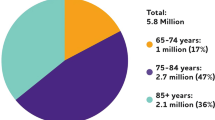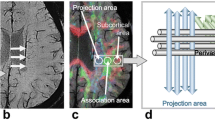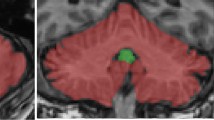Abstract
Alzheimer’s Neurodegenerative Disease is understood neurological issue, which is influenced cerebrum cells are causes the intellectual decrease and memory misfortune, the sickness begins gentle and deteriorates. There is a serious necessity to identify Alzheimer’s disease at an earlier stage, therefore that the appropriate treatment can initiate early. The foremost causes for Alzheimer’s diseases are low blood flow and brain activity. So, the serious Alzheimer disease has been recognized by several existing methodologies but they are fails to recognize the disease in the earlier stage. Thus, in this work use Single Photon Emission Nuclear Tomographic Imaging(SPECT) for find the Alzheimer’s diseases. The collected SPECT image noise is removed by applying Lucy-Richardson method and affected region is segmented by using Prolong adaptive exclusive analytical Atlas (PAEA). After this segmentation process Regional Atrophy Analysis (RAA) is apply for find the values of Gray Matters (GM) and White Matters (WM) regions in SPECT image. Finally Artificial Neural Network is applying for classification process. The experimental results shows that the promising outcomes in term of accuracy, sensitivity, and specificity.









Similar content being viewed by others
Change history
15 September 2022
This article has been retracted. Please see the Retraction Notice for more detail: https://doi.org/10.1007/s11042-022-13860-6
References
Alam S, Kwon G-R (2017) Alzheimer disease classification using KPCA, LDA, and multi-kernel learning SVM. http://onlinelibrary.wiley.com/doi/10.1002/ima.22217/abstract. Accessed 18 May 2017
Arora A, Bhagat N (2016) Insight into the molecular imaging of alzheimer’s disease. International Journal of Biomedical Imaging 2016(7462014):17. https://doi.org/10.1155/2016/7462014
Chien DT, Szardenings AK, Bahri S et al (2014) Early clinical PET imaging results with the novel PHF-tau radioligand [F18]-T808. J Alzheimers Dis 38(1):171–184
Gang Chen BDW, Xie C, Li W, Wu Z, Jones JL, Franczak M, Antuono P, Li S-J (2011) Classification of Alzheimer Disease, Mild Cognitive Impairment, and Normal Cognitive Status with Large-Scale Network Analysis Based on Resting-State Functional MR Imaging. Radiology 259(1):213–221
Guler I, Demirhan A, Karakis R (2009) Interpretation of MR images using self-organizing maps and knowledge-based expert systems. Digital Signal Processing 19(4):668–677
Habib et al (2012) Comparative methods for PET image segmentation in pharyngolaryngeal squamous cell carcinoma. Eur J Nucl Med Mol Imaging 39(5):881–891
Huang X, et al (2007) Clustering-based linear least square fitting method for generation of parametric images in dynamic FDG PET studies. International Journal of Biomedical Imaging 65641, 8
Lahmiriand S, Boukadoum M (2013) Alzheimer’s disease detection in brain magnetic resonance images using multiscale fractal analysis. International Scholarly Research Network (ISRN) 2013:7
Landau SM, Harvey D, Madison CM, Reiman EM, Foster NL, Aisen PS, Petersen RC, Shaw LM, Trojanowski JQ, Jack CR Jr, Weiner MW, Jagust WJ (2010) Comparing predictors of conversion and decline in mild cognitive impairment. Neurology 75:230–238
López MM, Ramírez J, Górriz JM, Álvarez I, Salas-Gonzalez D, Segovia F, Chaves R (2009) SVM-based CAD system for early detection of the Alzheimer's disease using kernel PCA and LDA. Neurosci Lett 464(3):233–238
Magnin B, Mesrob L, Kinkingnehun S, Pelegrini-Issac M, Colliot O, Sarazin M, Dubois B, Lehericy S, Benali H (2009) Support vector machine-based classification of Alzheimer’s disease from whole-brain anatomical MRI. Neuroradiology 51:73–78
Manoochehri M, Kolahan F (2014) Integration of artificial neural network and simulated annealing algorithm to optimize deep drawing process. Int J Adv Manuf Technol 73(1):241–249
Meena A, Raja K (2012) Segmentation of Alzheimer’s Disease in Pet Scan Datasets using Matlab. Int J Comput Appl 57(10)
Meng H, Hong W, Song J (2008) Feature extraction and analysis of ovarian cancer proteomic mass spectra. The 2nd International Conference on Bioinformatics and Biomedical Engineering (ICBBE), IEEE, 16–18
Mosconi L, Brys M, Glodzik-Sobanska L, De Santi S, Rusinek H, de Leon MJ (2007) Early detection of Alzheimer's disease using neuroimaging. https://www.ncbi.nlm.nih.gov/pubmed/16839732. Accessed 12 July
Mosconi L, Brys M, Glodzik-Sobanska L, Santi SD, Rusinek H, de Leon MJ (2007) Early detection of alzheimer’s disease using neuroimaging. Exp Gerontol 42:129–138
Oyelade OJ, Oladipupo OO, Obagbuwa IC (2010) Application of k-Means Clustering algorithm for prediction of Students’ Academic Performance. International Journal of Computer Science and Information Security 7:292–295
Plant C, Teipel SJ, Oswald A et al (2010) Automated detection of brain atrophy patterns based on MRI for the prediction of Alzheimer’s disease. NeuroImage 50(1):162–174
Sadek RA (2013) Regional atrophy analysis of MRI for early detection of alzheimer's disease. International Journal of Signal Processing, Image Processing and Pattern Recognition 61
Shakeel PM, Baskar S, Dhulipala VS, Jaber MM (2018) Cloud based framework for diagnosis of diabetes mellitus using K-means clustering. Health information science and systems 6(1):16. https://doi.org/10.1007/s13755-018-0054-0
Shakeel PM, Baskar S, Dhulipala VS, Mishra S, Jaber MM (2018) Maintaining security and privacy in health care system using learning based Deep-Q-Networks. J Med Syst 42(10):186. https://doi.org/10.1007/s10916-018-1045-z
Shakeel PM, Manogaran G (2018) Prostate cancer classification from prostate biomedical data using ant rough set algorithm with radial trained extreme learning neural network. Heal Technol:1–9. https://doi.org/10.1007/s12553-018-0279-6
Sridhar KP, Baskar S, Shakeel PM, Dhulipala VS (2018) Developing brain abnormality recognize system using multi-objective pattern producing neural network”, Journal of Ambient Intelligence and Humanized Computing :1–9. https://doi.org/10.1007/s12652-018-1058-y
Watanabe H, Ono M, Saji H Novel PET/SPECT probes for imaging of tau in alzheimer’s disease. Sci World J 2015, 2015(124192):6. https://doi.org/10.1155/2015/124192
Yuan HC, Xiong FL, Huai XY (2003) A method for estimating the number of hidden neurons in feed-forward neural networks based on information entropy. Comput Electron Agric 40(1–3):57–64
Zhang D, Wang Y, Zhou L, Yuan H, Shen D (2011) Multimodal classification of Alzheimer's disease and mild cognitive impairment. NeuroImage 55:856–867
Author information
Authors and Affiliations
Corresponding author
Additional information
Publisher’s note
Springer Nature remains neutral with regard to jurisdictional claims in published maps and institutional affiliations.
This article has been retracted. Please see the retraction notice for more detail: https://doi.org/10.1007/s11042-022-13860-6
About this article
Cite this article
Kumar, R., Sakthidasan Sankaran, K., Sampath, R. et al. RETRACTED ARTICLE: Analysis of regional atrophy and prolong adaptive exclusive atlas to detect the alzheimers neuro disorder using medical images. Multimed Tools Appl 79, 10249–10265 (2020). https://doi.org/10.1007/s11042-019-7213-4
Received:
Revised:
Accepted:
Published:
Issue Date:
DOI: https://doi.org/10.1007/s11042-019-7213-4




